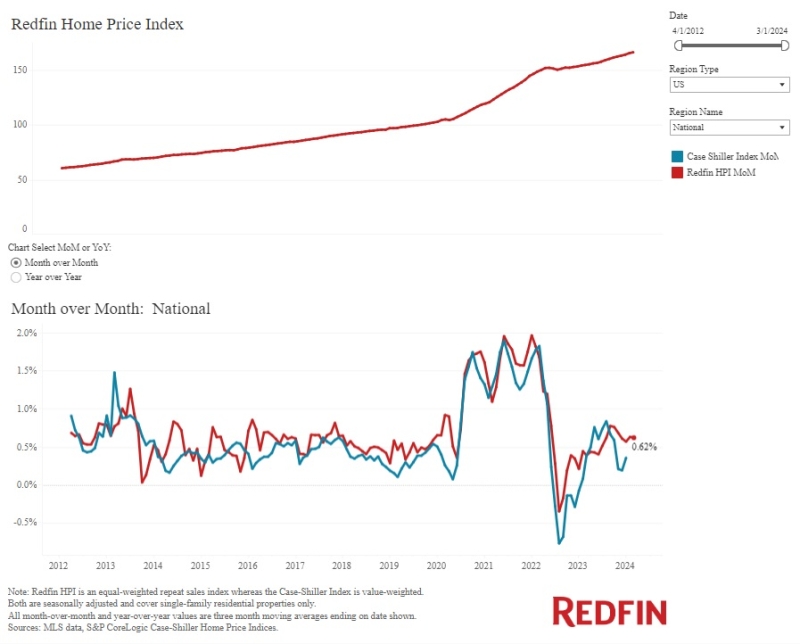Advertisement
Quit holding up the line
Quit holding up the lineDerek Longloan guidelines, programs, automating internal processes
Using loan guidelines to speed originations and increase
business
Achieving success in today's wholesale mortgage lending market is
predicated, in large part, upon operational consistency and speed
on the origination side. With a shrinking borrower market fueling a
hypercompetitive lending environment, loan officers must be able to
react quickly to borrower and investor requests alike. Furthermore,
similar forces in the marketplace are pushing investors to be much
more particular and selective about the lenders they choose to work
with, and much less forgiving of those that do not meet their new
criteria.
Perhaps now more than ever before, lenders are seeking to
achieve a streamlined, operational state of nirvana--no wasted
effort, wasted time or wasted money--both internally and in their
strategic partnerships within the industry. This puts more pressure
on originators to clearly demonstrate that they, too, are committed
to operating as nimbly and profitably as possible.
From an operational standpoint, one of the most obvious areas
for loan officers to focus on is their loan guideline management.
Lenders are becoming increasingly aggressive in deleting programs
while introducing innovative new loan products into the marketplace
as competition among lenders fighting for a share of the shrinking
borrower market continues to rise.
The sheer number of daily changes by multiple lenders to their
loan products makes it more difficult for lenders to stay on top of
the options available to their borrower customers. Prior to the
sub-prime industry problems, it was not unusual to average more
than 70 guideline changes on a monthly basis; however, more
recently, investors have pushed through as many as 60 changes in
one week. The originators who are able to quickly and accurately
find, price, originate and close loans with up-to-date loan
guideline information will win the favor of borrowers and investors
alike.
Rest in peace, traditional paper guideline
sheets
Good loan officers know that the most vital part of the lending
process occurs very early on--gaining borrowers' trust and their
commitment to the loan program that meets their needs. Regardless
of market conditions, an originator's ability to do this quickly is
of paramount importance. In a tight market like the present one, it
is an essential component of success.
With the increase in lenders, loan products and investor
guidelines, it is simply more difficult for originators to move
quickly and gain their borrowers' commitment. A large contributor
to this is the proclivity of many lenders to remain faithful to the
paper-based guideline sheet file. Investors have taken great
strides (and invested heavily) in automating their internal
processes and, understandably, have an expectation that their
partners have done the same.
Consider the popular television commercial promoting debit card
usage: dozens of customers easily make their way through a crowded
coffee shop--ordering their beverage and food, receiving it, paying
for their order--in a fluid, carefully choreographed example of
streamlined efficiency. Until one gentleman pulls out paper money
and the whole system temporarily stutters. Automation makes the
system function seamlessly. Lenders work with multiple partners and
no one wants to be the man with the paper money.
It no longer makes sense to utilize an archaic methodology to
manage investor rate sheets for literally thousands of different
loan products and guidelines when there are cost-effective
technology tools available to automate this process. For many
originators, it can take several days, if not weeks, to manually
receive updated guidelines. The lender has to wait for the
guideline announcement, print out paper sheets, replace old
guidelines in a physical binder and then distribute the new
guidelines to loan officers. Time once spent on manually printing,
binding, storing and accessing rate sheets can be better spent
generating leads and closing loans.
Just having the updated guideline is only the first step,
though. Once a loan officer and a borrower decide on the loan
product they want to pursue, the lender needs to be able to quickly
price the loan. Instead of making another phone call, many
guideline systems now automate the pricing, building in custom
variables as needed.
Through automation, loan officers can save an extra phone call
and essentially provide instant approvals. They are also guaranteed
accurate loan pricing for their borrowers. The more quickly and
consistently that this can be done, the less likely the borrower
will shop around with other lenders, which protects market
share.
Effective guideline eligibility and pricing engine technology
also enables lenders to take full advantage of all the loan
products available to them. Guideline tools can offer loan officers
the ability to quickly search among all partner investors and
present the borrower with many options they are qualified for. The
originator can then best illustrate to his borrowers the
differences between loan products and clearly outline and explain
which loan(s) are best for them. This, in turn, fuels lead
generation as it produces more satisfied borrowers who are more
likely to direct friends and family to the lender for their
mortgage needs.
Automated pricing and guideline management provides originators
the added strategic advantage of risk mitigation. Regulators are
scrutinizing loans--particularly sub-prime products--more than ever
before, and lenders need to be absolutely certain in the quality of
the guideline information that they have to work with. Otherwise,
they run the risk of dealing with costly repurchase requests and
fallout from consumer advocacy groups, along with potential
regulatory penalties.
Integrating technology into workflow
For an automated product and pricing eligibility solution to truly
provide value as a replacement for paper-based rate sheets, lenders
should consider the following:
-First and foremost, it should be able to provide up-to-date
(daily) product and pricing guideline information that is easily
accessible.
-Information should be presented in a way that enables loan
officers to easily search multiple loan products (including
non-conforming loan products) from multiple lender partners and
quickly identify which products are appropriate to individual
borrowers.
-The system should present loan information in a format that can
easily be shared with--and understood by--the borrower.
-If an originator often works remotely, a Web-based solution
enables him to access pricing and product information from any
location with Internet connectivity.
The return on an investment for such a solution is generally a
rapid one, driven by the cumulative decrease in time spent per loan
paired with savings generated through the elimination of redundant
staffing. Having the flexibility of a Web-based solution enables
lenders to essentially originate and close loans from any location
at any given time, which provides them with a competitive advantage
in a growing e-commerce lending environment.
In an industry that leaves behind those that are still using
cash, not having managed guidelines and automated pricing inhibits
the lender from thriving and maintaining their competitive
advantage. Ultimately, lenders should consider and select a
solution that can consistently deliver the best information to
quickly meet his needs, the needs of the borrower and perhaps most
importantly, the needs of the lender/investor.
Derek Long is founder and president of Vista, Calif.-based
Lender E-Source, which
provides loan guidelines and automated loan pricing to mortgage
professionals. He may be reached at (800) 417-4199 or e-mail [email protected].
About the author





